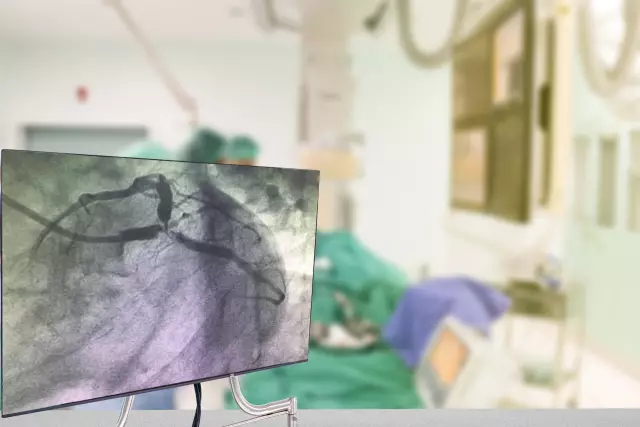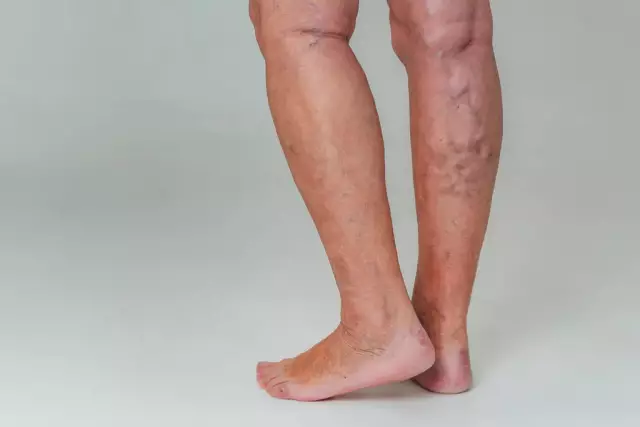- Author Rachel Wainwright [email protected].
- Public 2023-12-15 07:39.
- Last modified 2025-11-02 20:14.
Rheography
Definition of rheography: a brief description

Rheography is a diagnostic method in which blood flow is examined both in specific organs and tissues, and throughout the body as a whole. The essence of rheography consists in the graphic registration with the help of a special device - a rheograph - of changes in the electrical conductivity of an organ caused by pulse fluctuations in blood flow.
Among all the structures of our body, blood has the highest electrical conductivity. This means that during the systolic contraction of the heart, when blood rushes into the nearby organs, the electrical conductivity of these parts of the body will be high, and at the time of relaxation of the heart muscle (diastole), on the contrary, it will be low. Based on the readings of the rheograph, a pulse waveform is displayed, called a rheogram.
The advantages of rheography
Rheography is a non-invasive method, which means it is harmless to the body. Indeed: no interference in its work occurs. The skin and tissues are not damaged, because the electric current passed through them has such a low magnitude and frequency that it is simply not capable of causing any tangible damage.
Harmlessness is not the only advantage of rheography. This method is highly sensitive. Rheography allows you to assess the general condition of the blood supply, to identify violations of the blood supply as an individual organ, be it the brain, kidneys or liver, and the whole organism.
What is a rheograph?
The basis of the rheograph is an electric current generator and a nozzle for converting the measurements into a graphical form. A rheogram is recorded using metal electrodes placed on target areas of the body. Before rheography, a tissue pad soaked in sodium chloride solution is placed between the electrode and the patient's body surface (this will improve their mutual contact), and the skin itself is wiped with an alcohol solution to remove the fatty film.
What can be seen on the rheogram?
The rheogram has the form of a sinusoid with a steeper rise, characterizing arterial blood flow, and a smooth descent, which, in turn, is a display of venous blood flow. In order to thoroughly analyze the state of blood flow, many such curves must be taken during rheography. An experienced diagnostician will pay attention to the regularity of the curve (similarity between several curves) and its shape, the presence and number of additional curves in the descending phase. So, for example, in vegetative vascular dystonia and arrhythmias, adjacent curves are different in shape.

In addition to the external characteristics of the curves, the doctor solves several more mathematical problems: according to special formulas, the rheographic index is calculated, for which a certain interval is set, when going beyond which it is possible to judge the presence of pathology, and several more indicators (amplitude-frequency indicator, venous outflow indicator, pulse wave propagation time).
Central rheography: the work of the heart under a magnifying glass
Central rheography - examining blood flow in the pulmonary artery and aorta - is a great way to assess your heart's performance. By the blood filling of the lung and right ventricles, the state of the contractile function of the heart is judged. Normally, the pulmonary artery rheogram looks like this: a shallow ascending part (on the aortic rheogram, this segment is steeper), a round apex with a small "dimple" or additional wave and a smooth descent. When conducting central rheography, the following types of rheograms are distinguished, depending on the state of blood flow in the heart and lungs:
- hypervolemic (increased blood flow). On the rheogram, this is reflected by a higher peaked curve with a steep descending part;
- hypovolemic (decreased blood flow). The height of the curve decreases, “serifs” appear on its ascending part, the top is flat, the descending part acquires a flatter appearance;
- hypertensive (increased pressure in the vessels of the lungs). The curve has a steep ascent, a round top and a gentle descent.
Vascular rheography
Vascular rheography or rheovasography allows you to assess blood flow in the vessels at the periphery, that is, in the extremities. The main "targets" of rheovasography are the vessels of the upper arm, hand (upper limb), thigh, lower leg, and foot (lower limb). Rheography of the vessels is carried out in the same way as described above: rectangular or strip electrodes are used, the skin under them is treated with a sodium chloride solution or a special electrically conductive gel. To examine the blood flow in a certain area (shoulder, lower leg, etc.), one electrode is applied at the beginning of this area, and the other, respectively, at its end. For example, if we talk about the lower leg, then these points will be the area of the ankle joint and the popliteal fossa.
The wave on the normal rheogram has a steep ascending part, a round crown and a gentle descent with possible additional waves. With the help of vascular rheography, it is possible, for example, to make a diagnosis such as obliterating endarteritis, or, as it is also called, "smoker's leg": a chronic disease in which the arteries of the leg and foot are affected. On the rheogram this is reflected in a decrease in the height of the curve, flattening of the top, and the absence of additional waves.
Thus, if there are prerequisites or suspicions of problems with peripheral vessels (loss of their tone, elasticity, narrowing of the lumen, or even blockage), then the rheography of the vessels will be able to answer exciting questions.
Found a mistake in the text? Select it and press Ctrl + Enter.






